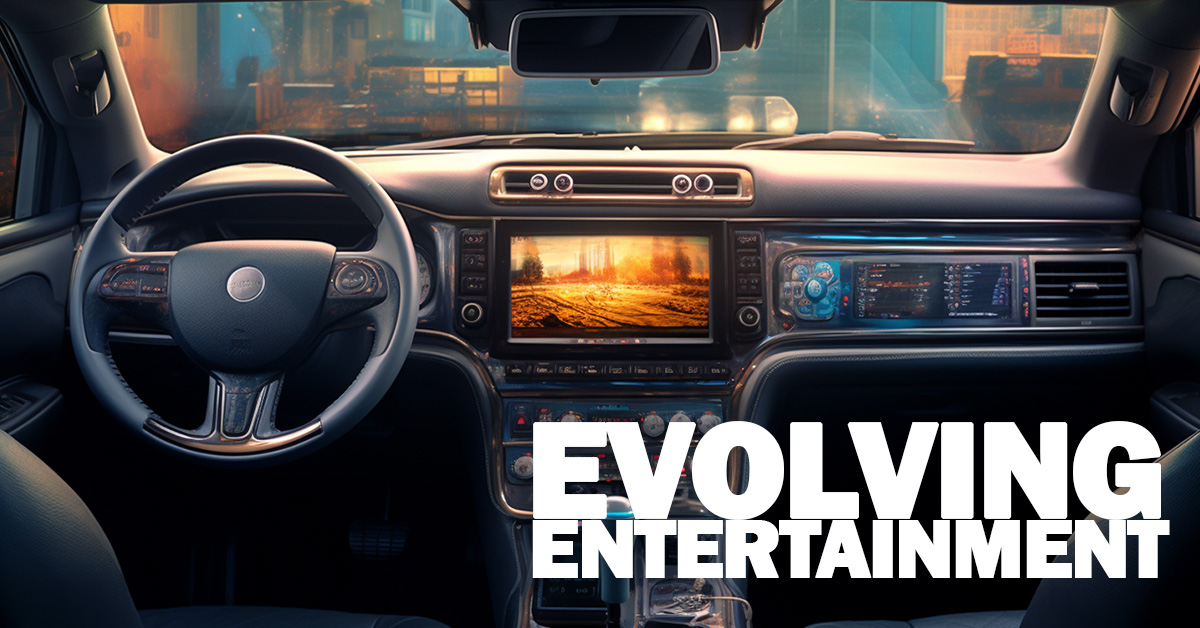Evolving Entertainment: A Journey Through the History of In-Car Entertainment

Evolving Entertainment: A Journey Through the History of In-Car Entertainment
The modern automobile is more than just a means of transportation; it’s a mobile entertainment hub. But how did we get from crank windows and honking horns to touchscreens, streaming services, and digital gaming? Let’s take a trip down memory lane to explore the evolution of in-car entertainment.
The Early Days: Radios and the Dawn of In-Car Entertainment
In the early days of motoring, entertainment was a luxury, not a necessity. Drivers amused themselves with conversation, singing, or simply enjoying the scenery. However, the invention of the radio in the 1920s revolutionized in-car entertainment.
Initially, car radios were expensive and bulky, but by the mid-1930s, they had become more affordable and accessible to the general public. Push-button radios, introduced in the same decade, made selecting stations easier, further enhancing the in-car listening experience.
The Rise of Cassette Tapes and 8-Track Players
The 1960s saw the emergence of new forms of in-car entertainment, spearheaded by the 8-track tape player. Introduced by Ford in 1965, 8-track players offered increased versatility and control over music selection compared to radios.
However, cassette tapes, introduced in the early 1970s, quickly gained popularity, offering superior sound quality and smaller, more convenient tapes. By the 1980s, cassette players had become the dominant form of in-car entertainment.
The CD Revolution and the Dawn of Digital Audio
In 1984, Pioneer introduced the first in-car CD player, the CDX-1, marking a watershed moment in in-car entertainment. CDs offered superior sound quality, scratch resistance, and the ability to skip tracks, making them a popular choice among drivers.
CD players remained the standard for in-car entertainment for the next two decades, gradually replacing cassette players. The increasing popularity of digital audio and the rise of MP3 players further accelerated the transition towards digital music formats.
The Infotainment Era: Touchscreens, Connectivity, and a World of Possibilities
In the early 2000s, in-car entertainment systems began to evolve from simple music players to sophisticated infotainment systems. These systems integrated audio, navigation, and connectivity features, allowing drivers to control their music, get directions, and make calls hands-free.
The introduction of smartphones and touchscreens further transformed in-car entertainment. Smartphones enabled car connectivity, allowing drivers to access apps, stream music, and make calls through their phones. Touchscreens provided a more intuitive and user-friendly interface for controlling in-car systems.
The Future of In-Car Entertainment: A World of Possibilities
With self-driving cars on the horizon, the future of in-car entertainment is poised for even more significant advancements. As cars become more autonomous, drivers will have more time and freedom to enjoy entertainment options, from personalized entertainment systems to immersive gaming experiences.
In conclusion, the evolution of in-car entertainment reflects the ever-changing landscape of technology and consumer preferences. From the simple radios of the early days to the sophisticated infotainment systems of today, in-car entertainment has transformed the driving experience, making our journeys more enjoyable, connected, and informed.










